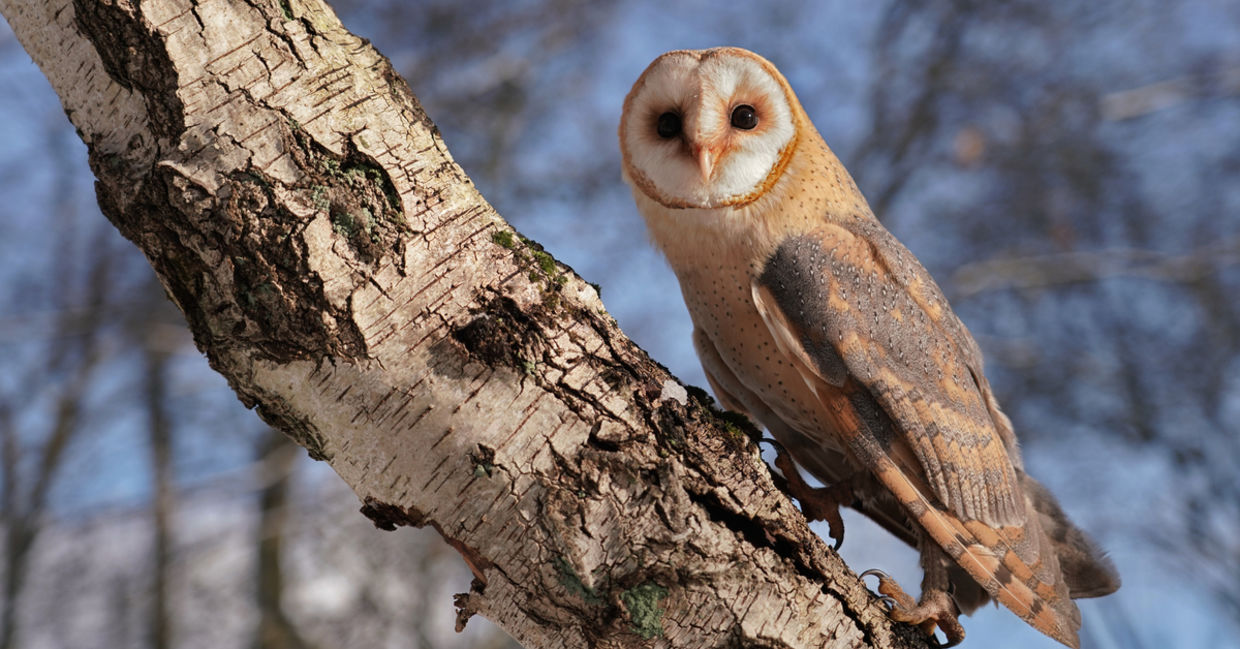
(Holger Kirk / Shutterstock.com)
Hoot! Hooray! A new, simple solution to controlling rodents that threaten grape vines comes in the shape of the humble barn owl.
And this solution will be welcome. This is because, according to the US Government, rats alone destroy about 20% of global agricultural crops each year, leading farmers to expend time and effort in rodent control methods. The good news is that new findings are highlighting the effectiveness of this majestic nocturnal bird.
An ongoing research project, supervised by Professor Matt Johnson at Humboldt State University in Arcata, California, is monitoring the effectiveness of barn owls in terminating rodent trespassers according to Bay Nature Magazine. Owls are natural predators of rodents, and farmers have already been exploiting their presence to ward off mice and gophers that prey on their crops.
Napa Valley is known for hundreds of hillside vineyards
Grape growers in Napa Valley are increasingly using owls to handle pests, and it is in their location that Johnson's research is taking place. Napa Valley, renowned for being a rich wine region, started using owls for rodent protection in the 1980s.
A boy Barn Owl nestling growing up in a nest box eating mice, gophers, & voles in the California grape ???? vines. Soon this youngster, along with his 4 older siblings, will rule the night sky ????. #WildAg pic.twitter.com/0UfMF0oRQC
— Ryan Bourbour (@talonDNA) April 11, 2021
This strategy was driven by the realization that years of using toxic fertilizers and rodenticides tainted the flavor of their prized grapes. In January 2020, the California Department of Pesticide Regulation, encouraged the use of barn owls when it severely limited the use of rodenticides in an effort to boost the move away from chemical pesticides.
The Humboldt team is responsible for comprehensive research
The research began in 2015 when Johnson’s team surveyed 75 California vintners, four-fifths of whom claimed that their owl boxes helped control rodents. Johnson, a self proclaimed bird lover according to his research website, was intrigued to learn of the owls’ abilities to counteract rodents. He wanted to fully investigate their predatory behaviors and ultimately determine their effectiveness in promoting agriculture.
Johnson, according to his research page, launched a series of projects that would include learning how barn owls select boxes to nest in, how they hunt across landscapes and how farmers form their perceptions of the owls and their effectiveness. His team is studying barn owl nest boxes scattered throughout Napa Valley and closely examining the birds.
His graduate students are busy photographing and checking as many 280 nesting boxes to hone in on these local owls, according to Bay Nature Magazine. What they have found so far is that owls have preferred tastes when it comes to where they choose to reside. They favor being at least three meters high, facing away from the sun and prefer grassland over forests. Most importantly, one owl family can consume 1,000-3,400 rodents a year according to varying studies.
Owls naturally hunt rodents in vineyards making them valuable allies for farmers
What’s most important to Johnson and his team is that the owl boxes could help one of California’s most economically important industries become less reliant on chemical pesticides, as he details on his website. This could be essential to reducing the carbon footprint-boosting chemicals that pesticides leave in their wake.
Johnson hopes that his research will also answer whether the barn owls can reduce the amount of pesticides grape growers use. Even though the question still remains unanswered, the published findings are bringing the team one step closer to finding an answer.
Napa Valley vintners have a strong connection to the land and don't want to tarnish it. They are taking responsibility in policy and action and moving towards sustainable solutions to combat agricultural threats. Just a simple owl. in its own natural habitat, can be the solution, and the research group promises to share more findings.
YOU MIGHT ALSO LIKE:
Snowy Owl Spotted in New York’s Central Park
Test Your Knowledge of Animals We Thought Extinct But Weren’t [Quiz]
New York City is Buzzing With Honey Bees!







